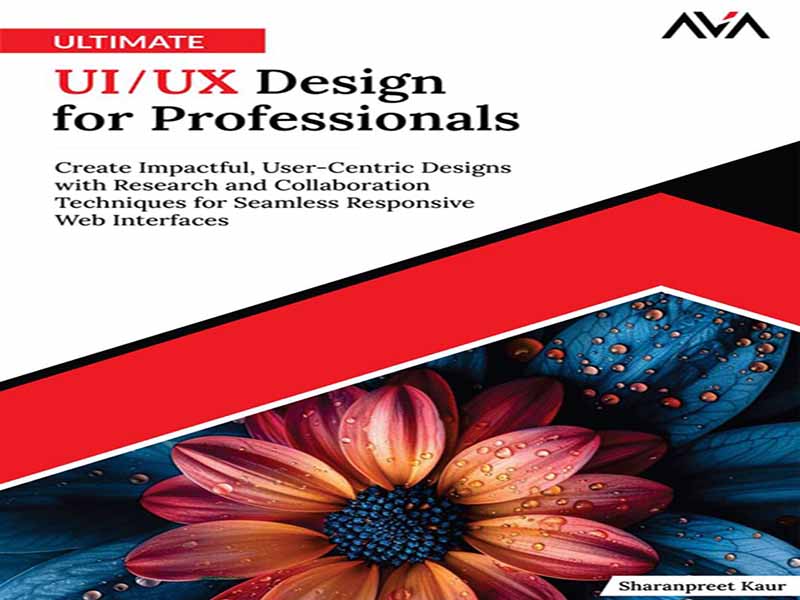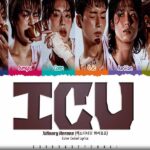- عنوان کتاب: Ultimate UI/UX Design for Professionals
- نویسنده: Sharanpreet Kaur
- حوزه: توسعه واسط کاربری
- سال انتشار: 2024
- تعداد صفحه: 497
- زبان اصلی: انگلیسی
- نوع فایل: pdf
- حجم فایل: 9.95 مگابایت
در عصر دیجیتال، جایی که تجربه اغلب بر هر چیز دیگری برتری دارد، نمیتوان اهمیت طراحی خوب رابط کاربری/تجربه کاربری را بیش از حد ارزیابی کرد. این کتاب شکاف دانش بین کسانی که در این زمینه تازهکار هستند و کسانی که میخواهند تواناییهای فعلی خود را بهبود بخشند، پر میکند و آن را برای طراحان مشتاق و متخصصان باتجربه مناسب میسازد. در ده فصل، ایدهها، الگوها و روشهای اساسی که طراحی شهودی و تأثیرگذار را تقویت میکنند، تجزیه و تحلیل میکنیم. هر فصل عمیقاً به یک جنبه منحصر به فرد از طراحی رابط کاربری/تجربه کاربری – از مفاهیم بنیادی تا شیوههای پیشرفته – میپردازد. هر ایده با مثالهای دنیای واقعی جان میگیرد که نشان میدهد چگونه میتوان نظریه را به راهحلهای طراحی کاربردی تبدیل کرد. مباحث مهمی از جمله معماری اطلاعات، روانشناسی کاربر و مهارت ایجاد تجربه یکپارچه پوشش داده خواهد شد. علاوه بر این، ما بر ابزارها، توصیههای عملی و بهترین شیوههایی که برای طیف وسیعی از سطوح مهارت مناسب هستند، تأکید میکنیم. خلاصهای از بینشها و مهارتهای کلیدی پوشش داده شده در سراسر کتاب به شرح زیر است: فصل 1. فرآیند تفکر طراحی: این فصل رابط کاربری/تجربه کاربری و فرآیند طراحی را معرفی میکند – یک رویکرد حل مسئله با مراحلی مانند تحقیق، ایدهپردازی، نمونهسازی اولیه، آزمایش و پیادهسازی. این چارچوب به طراحان کمک میکند تا کاربران را درک کنند، مفاهیم نوآورانهای ارائه دهند، راهحلها را اصلاح کنند و محصولاتی را ارائه دهند که هم برای کاربران و هم برای کسبوکارها مفید باشد. فصل ۲. اصول طراحی UX: این فصل اصول طراحی UX را پوشش میدهد و بر چگونگی شکلگیری تجربیات دیجیتال توسط زمینه، محتوا، ارتباطات و جامعه تمرکز دارد. ما با چالشهای بهکارگیری این عناصر مقابله خواهیم کرد و در مورد روش هفت مرحلهای که توسط طراحان UX برای حل خلاقانه مشکلات طراحی استفاده میشود، یاد خواهیم گرفت. فصل ۳. تحقیق و تحلیل برای طراحی UX: روشهای تحقیق UX در این فصل پوشش داده شده است که به شما در همه چیز از تعیین هدف گرفته تا جمعآوری، ارزیابی و استفاده از بینش کاربر کمک خواهد کرد. شما روشهای کیفی و کمی، مانند مصاحبهها و تجزیه و تحلیل، را برای اطلاعرسانی در مورد تصمیمات طراحی کاربر محور و تأثیرگذار خواهید آموخت. فصل ۴. هنر نقشهبرداری UX: این فصل اصول نقشهبرداری UX، از جمله چگونگی درک بهتر تعاملات کاربر با استفاده از نقشههای همدلی، نقشههای سفر و شخصیتهای کاربر، و همچنین ابزارهایی برای بهبود وضوح و اثربخشی نقشهبرداری را مورد بحث قرار میدهد. فصل 5. تسلط بر معماری اطلاعات و نقشههای سایت: نقشههای سایت و معماری اطلاعات، دو مؤلفه ضروری برای ایجاد وبسایتهای کاربرپسند، در این فصل پوشش داده شدهاند. علاوه بر بررسی سیستمهای معماری اطلاعات و یادگیری مفاهیم معماری اطلاعات مانند سازماندهی و وضوح، شما همچنین کشف خواهید کرد که چگونه نقشههای سایت برنامهریزی کارآمد وبسایت را تسهیل میکنند. فصل 6. قدرت وایرفریمها و نمونههای اولیه: این فصل با مثالهای عملی، بر ارزش وایرفریمها در ساختاردهی ایدهها برای طراحی تأکید میکند. علاوه بر این، شما نمونههای اولیه را بررسی خواهید کرد و کشف خواهید کرد که چگونه عناصر تعاملی، وایرفریمها را به واقعیت تبدیل میکنند. شما در مورد بهترین ابزارها برای ایجاد و آزمایش نمونههای اولیه و وایرفریمها اطلاعات کسب خواهید کرد. فصل 7. طراحی بصری و الگوهای رابط کاربری: یک مفهوم کلیدی برای تمرکز توجه کاربر و طراحی رابطهای کاربری کاربرپسند، سلسله مراتب بصری است که در این فصل پوشش داده شده است. شما الگوهای طراحی رابط کاربری، راهحلهای استاندارد صنعتی برای مسائل رایج را بررسی خواهید کرد و کتابخانههای برتر الگوی رابط کاربری را برای سادهسازی فرآیند طراحی خود پیدا خواهید کرد. فصل 8. قدرت ماکتها: این فصل نقش ماکتها در طراحی رابط کاربری، ابزارهای کلیدی برای ایجاد آنها و اهمیت میکروکپی و ریزتعاملها را پوشش میدهد. ما بررسی خواهیم کرد که چگونه هوش مصنوعی بر طراحی رابط کاربری تأثیر میگذارد و مزایا و معایب آن را برجسته خواهیم کرد. فصل 9. طراحی وب واکنشگرا: اصول طراحی وب واکنشگرا (RWD)، مانند کوئریهای رسانهای، شبکههای انعطافپذیر و تصاویر واکنشگرا، در این فصل پوشش داده میشوند. تمایزات بین طراحی واکنشگرا و تطبیقی نیز با تأکید بر روششناسی Mobile-First پوشش داده خواهد شد. فصل 10. تسلط بر تحویل طراحی: این فصل فرآیند تحویل طراحی را پوشش میدهد، جایی که طراحان UX داراییها و مستندات را به توسعهدهندگان تحویل میدهند. شما کشف خواهید کرد که چگونه یک انتقال یکپارچه از طراحی به توسعه با همکاری و ارتباط کارآمد بین طراحان و توسعهدهندگان تضمین میشود. فصل 11. آمادگی برای مصاحبه برای طراح UI/UX: این بخش آخر، توصیههایی در مورد چگونگی ارائه مؤثر مهارتهای طراحی به کارفرمایان بالقوه، آماده شدن برای سوالات متداول مصاحبه و ایجاد یک نمونه کار جذاب ارائه میدهد. این کتاب شما را در یک سفر دقیق در طراحی کاربر محور، صرف نظر از اهدافتان – چه بخواهید یک حرفه جدید را شروع کنید و چه بخواهید مهارتهای خود را تقویت کنید – هدایت میکند. در پایان این فصل، شما نه تنها خواهید دانست که چگونه رابطهای کاربری زیبا و کاربردی ایجاد کنید، بلکه خواهید دانست که چرا هم کسبوکارها و هم کاربران آنها را مهم میدانند. به جعبه ابزار شما برای شکل دادن به آینده تجربه دیجیتال خوش آمدید – بیایید با هم چیزی قابل توجه خلق کنیم.
It is impossible to overestimate the importance of good UI/UX design in the digital age, where experience frequently takes position over everything else. This book bridges the knowledge gap between those who are new to the subject and those who want to improve their current abilities, making it suitable for both aspiring designers and seasoned professionals. In ten chapters, we break down the fundamental ideas, patterns, and methodologies that power intuitive, impactful design. Each chapter delves deeply into a unique facet of UI/UX design— from foundational concepts to advanced practices. Each idea is given life by realworld examples, which demonstrate how theory may be translated into workable design solutions. Important topics including information architecture, user psychology, and the craft of seamless experience creation will be covered. Additionally, we emphasize tools, practical advice, and best practices that are appropriate for a range of skill levels. A snapshot of key insights and skills covered throughout the book is listed as follows: Chapter 1. The Design Thinking Process: This chapter introduces UI/UX and the design process—a problem-solving approach with stages like research, ideation, prototyping, testing, and implementation. This framework helps designers understand users, coming up with innovative concepts, refine solutions, and deliver products that benefit both users and businesses. Chapter 2. Fundamentals of UX Design: This chapter covers the fundamentals of UX design, focusing on how Context, Content, Communication, and Community shape digital experiences. We will tackle the challenges of applying these elements and learn about the Seven-Step Method used by UX designers to solve design problems creatively. Chapter 3. Research and Analysis for UX Design: The UX research methods are covered in this chapter, which will help you with everything from goal-setting to collecting, evaluating, and using user insights. You will learn qualitative and quantitative methods, like interviews and analytics, to inform user-centered, impactful design decisions. Chapter 4. The Art of UX Mapping: This chapter discusses the fundamentals of UX mapping, including how to better understand user interactions using empathy maps, journey maps, and user personas, as well as tools to improve the clarity and efficacy of mapping. Chapter 5. Mastering Information Architecture and Sitemaps: Sitemaps and information architecture, two essential components for creating userfriendly websites, are covered in this chapter. In addition to exploring IA systems and learning about IA concepts like organization and clarity, you will also discover how sitemaps facilitate efficient website planning. Chapter 6. The Power of Wireframes and Prototypes: With practical examples, this chapter emphasizes the value of wireframes in structuring ideas for design. Additionally, you will explore prototypes and discover how interactive elements bring wireframes to life. You will earn about the best tools for creating and testing prototypes and wireframes. Chapter 7. Visual Design and UI Patterns: A key concept for focusing user attention and designing user-friendly interfaces is visual hierarchy, which is covered in this chapter. You will examine UI design patterns, industrystandard solutions for common issues and find top UI pattern libraries to streamline your design process. Chapter 8. The Power of Mockups: This chapter covers the role of mockups in UI design, key tools for creating them, and the importance of microcopy and microinteractions. We will explore how AI affects UI design, highlighting both its advantages and disadvantages. Chapter 9. Responsive Web Design: The fundamentals of responsive web design (RWD), such as media queries, flexible grids, and responsive pictures, are covered in this chapter. The distinctions between responsive and adaptive design will also be covered, with an emphasis on the Mobile-First methodology. Chapter 10. Mastering in Design Handoff: This chapter covers the design handoff process, where UX designers deliver assets and documentation to developers. You will discover how a seamless transition from design to development is ensured by efficient cooperation and communication between designers and developers. Chapter 11. Interview Preparation for UI/UX Designer: This last section offers advice on how to effectively present design skills to prospective employers, prepare for frequently asked interview questions, and create an engaging portfolio. This book will lead you through a careful journey in user-centered design, regardless of your goals—whether you want to start a new career or hone your skills. By the end of the chapter, you will not only know how to create aesthetically pleasing and useful interfaces, but you will also know why both businesses and users find them important. Welcome to your toolkit for shaping the future of digital experience—let us create something remarkable together.
این کتاب را میتوانید از لینک زیر بصورت رایگان دانلود کنید:
Download: Ultimate UI/UX Design for Professionals



































نظرات کاربران